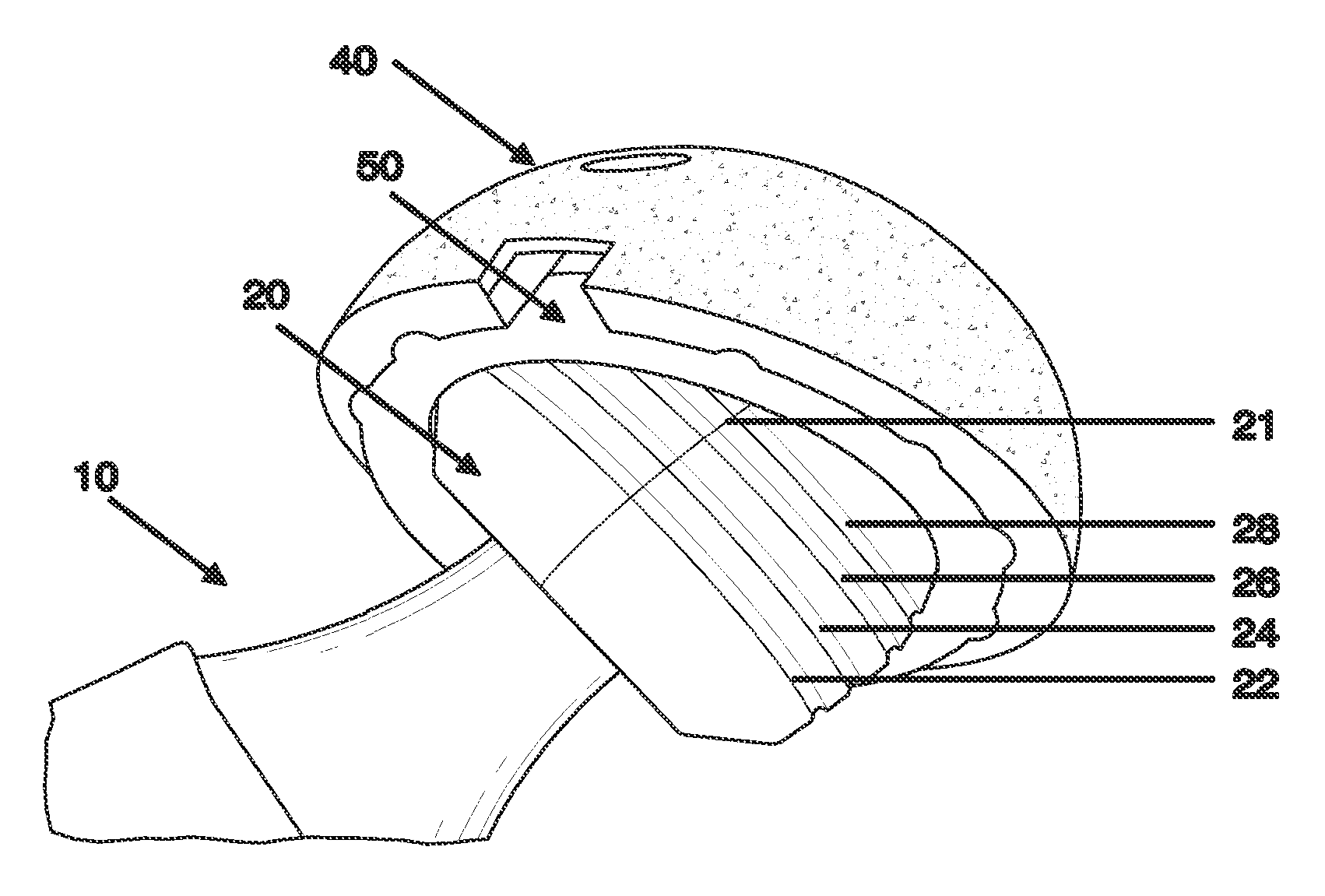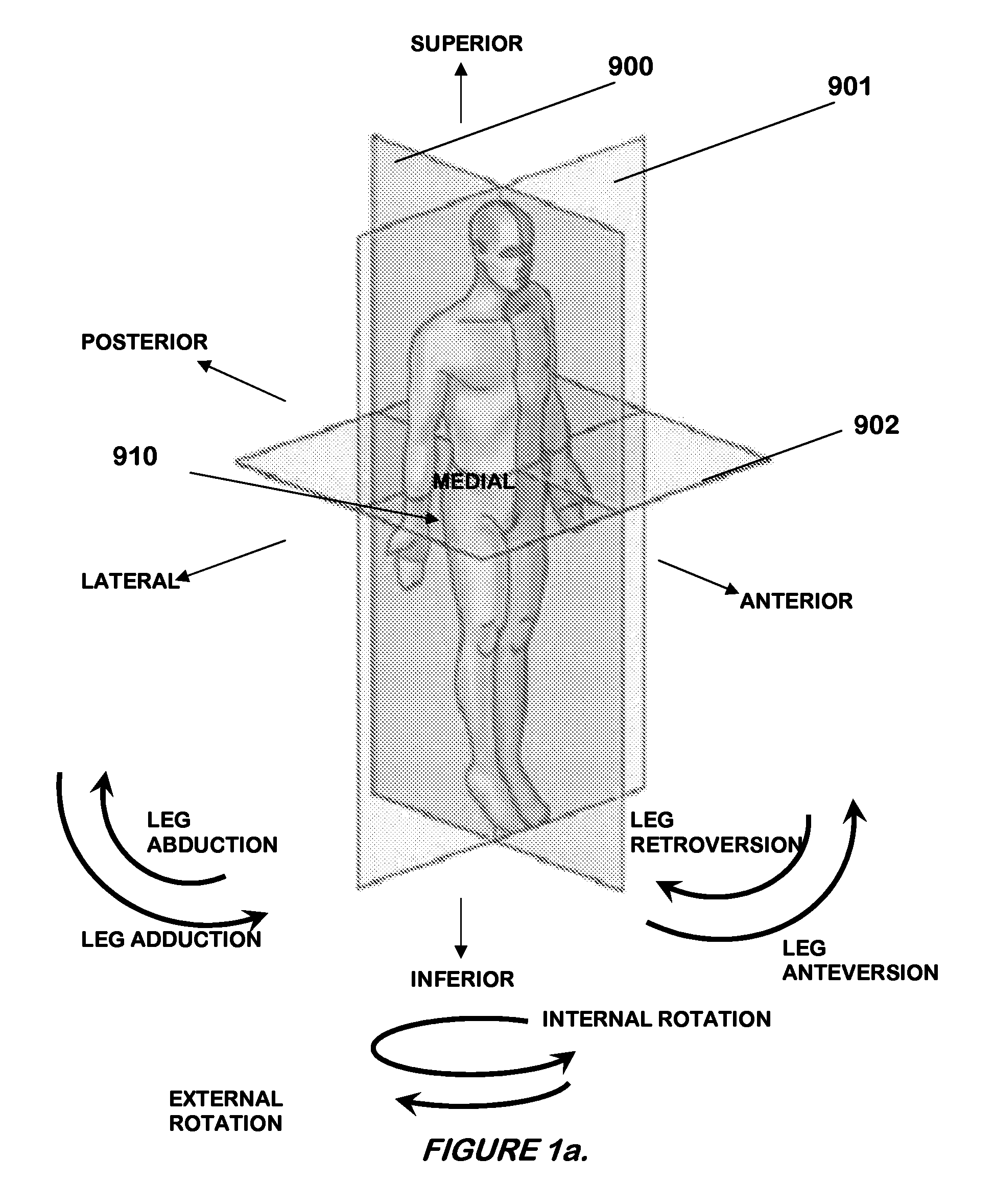System of orienting femoral head for acetabular prosthesis alignment
a technology of femoral head and acetabular prosthesis, which is applied in the field of system and method of implanting a hip prosthesis, can solve the problems of inability to verify the correct placement of the acetabular shell component intraoperatively, adversely affecting postoperative performance, function, range of motion, and joint stability
- Summary
- Abstract
- Description
- Claims
- Application Information
AI Technical Summary
Benefits of technology
Problems solved by technology
Method used
Image
Examples
Embodiment Construction
[0063]The Figures generally relate to geographically mapping a trial femoral head in order to assess the orientation of an acetabular shell component during trial reduction.
[0064]FIGS. 1a and 1b illustrate a right hip joint (910) and various directions of anatomical movement related to the human leg. FIG. 1a shows a hip joint (910), which allows a human leg to move anteriorly within a sagittal plane (900) during anteversion or posteriorly within the sagittal plane (900) in retroversion. Hip joint (910) also allows a human leg to move laterally within a coronal plane (901) during abduction and medially within the coronal plane (901) during adduction. Internal-external rotation may be enabled by twisting the leg about the superior inferior axis and within a transverse plane (902) while the leg is in full extension. However, rotation may be performed during any state of flexion, version, and / or abduction. FIG. 1b generally depicts a proper orientation of a natural acetabulum and correc...
PUM
| Property | Measurement | Unit |
|---|---|---|
| insertion angle | aaaaa | aaaaa |
| insertion angle | aaaaa | aaaaa |
| anteversion angle | aaaaa | aaaaa |
Abstract
Description
Claims
Application Information
 Login to View More
Login to View More - R&D
- Intellectual Property
- Life Sciences
- Materials
- Tech Scout
- Unparalleled Data Quality
- Higher Quality Content
- 60% Fewer Hallucinations
Browse by: Latest US Patents, China's latest patents, Technical Efficacy Thesaurus, Application Domain, Technology Topic, Popular Technical Reports.
© 2025 PatSnap. All rights reserved.Legal|Privacy policy|Modern Slavery Act Transparency Statement|Sitemap|About US| Contact US: help@patsnap.com



